Bicycle Share - Sightsee Economically In Tsukiji, Odaiba, And More!

We recommend traveling by bicycle rather than by train as Tokyo tourist attractions are often quite near one another! In this article, we’ll introduce how to utilize handy bicycle sharing and our thoughts on the service!
Use Bicycle Share to Enjoy the Streets of Tokyo
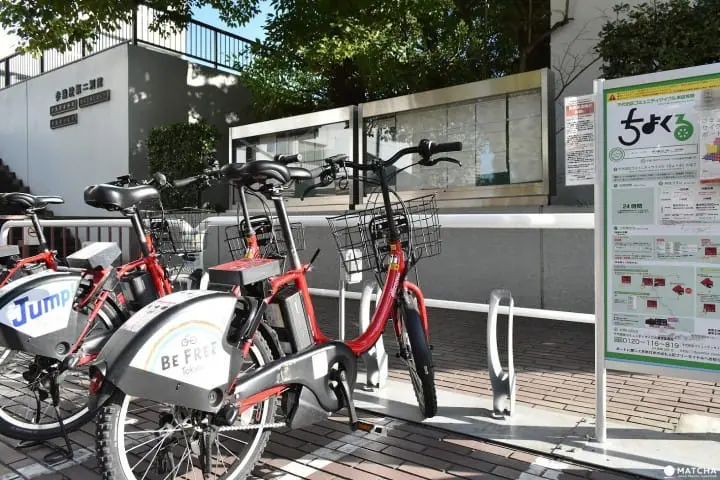
Sightseeing areas in Tokyo, such as Ginza, Tsukiji, and Odaiba, are scattered across the map within a close range of each other. As such, you can travel more efficiently with bicycles depending on the route rather than using the train.
Bicycle sharing is a service through which you can freely use bicycles at designated ports (bicycle parking areas) located throughout the city.
Among the services available, the bicycle sharing offered by DOCOMO BIKE SHARE, INC. is available for 24-hour use with the number of ports totaling a large number of 460 locations within the city of Tokyo (ten wards) as of February 2018. As long as there is a port in the area, then you are free to rent or return a bicycle from anywhere.
Shared usage is possible in seven wards of Tokyo (*1) including Shinjuku, Shibuya, Minato, which is famous for Tokyo Tower and Roppongi, and Chuo, where you can find both Nihonbashi and Ginza.
The service is available at a reasonable price through which you can enjoy the change in the cityscape, making it perfect for Tokyo sightseeing.
In this article, we visited the National Diet Building, the Imperial Palace, Ginza, Tsukiji, and Odaiba, all of which are popular sightseeing spots, through the bicycle sharing service!
*1: The seven wards in the city include Chiyoda, Chuo, Minato, Shinjuku, Bunkyo, Koto, and Shibuya.
9:00 From Registration to Your Departure: Cycle to the National Diet Building!
1. Free to Register! Become a Member
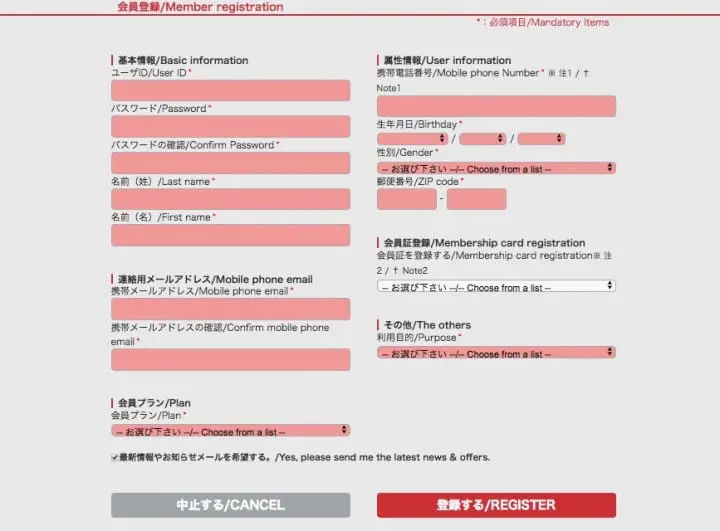
You are required to be a registered member to utilize the bicycle sharing service. Access the member registration page and fill out the required items following the instructions on the screen.
Language support is available not only in Japanese, but also in English. You are required to provide a credit card number and an email address to be sent the unlocking pass code when registering.
Payment is made through credit card. Bicycles can be used for every 30 minutes for 162 yen plus tax.
There are two memberships available. The Monthly Membership will always give you your first 30 minutes free for a monthly payment of 2160 yen.
The One Trip Membership will cost 162 yen for the first 30 minutes and 108 yen for every additional 30 minutes. Both fees include tax.
If you want to use bicycle sharing to sightsee, then the One Trip Membership is a bargain!
2. Select Your Bicycle Parking Area and Receive a Pass Code!
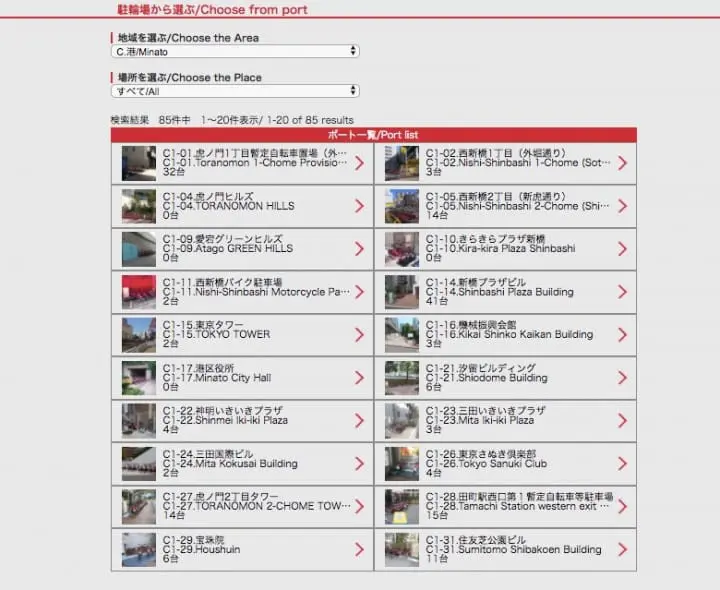
Once you’ve registered as a member, log in and find the port that you wish to rent your bicycle at. The Docomo Bike Share Port Navi app (iOS/Android in Japanese) is useful when searching for ports. On the app, the nearest ports will be displayed on a map and you can check for the number of bicycles available.
If you’re heading to the National Diet Building, then the port next to Nagatacho Exit 2 (A4-03. House of Councillors Annex 2/Nagatacho Station Exit 2) is the closest port. It’s also completely fine to rent your bicycle from a port nearby your lodgings.
Once you find the port, select a bicycle. You will be sent a pass code for unlocking the bicycle to the email address you provided during registration.
By the way, the port near Nagatacho Exit 2 is popular and there were only three bicycles left at 9:00 on the day our writer visited. There are times when there are no bicycles at popular ports, so be sure to check how many bicycles are available when making your reservation.
3. Unlock Your Bicycle at the Port
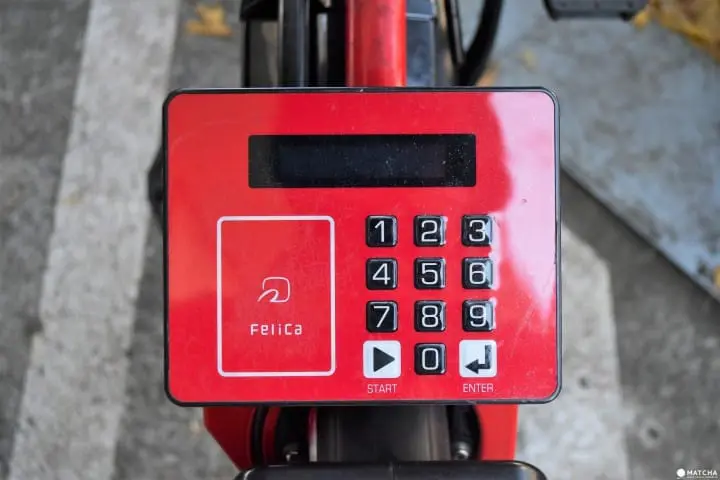
Once you’ve found your bicycle, press the START button on the panel at the back of the saddle. The lock will be released after inputting the pass code. You can now ride your bicycle.
You are given 20 minutes to unlock your bicycle after reserving it. Your reservation will automatically be cancelled after 20 minutes have passed, so please take note of this.
9:10 Arrive Right Away at the National Diet Building!
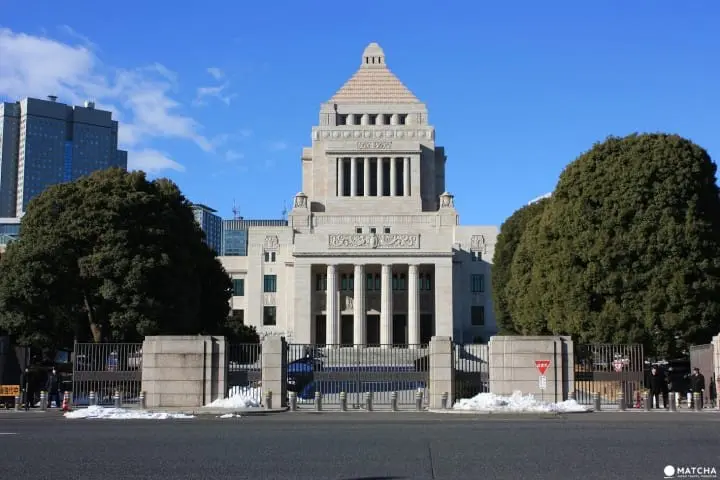
You will arrive at the National Diet Building, the center of the Japanese government, three minutes after leaving the Nagatacho port.
It is an electric bicycle and will immediately move forward by pedaling once, so even hills are easy! Those that don’t have confidence in their stamina can rest assured. You can also check the meter for how much battery is remaining.
9:15 Fully Enjoy History and Nature by the Imperial Palace

Continue past the National Diet Building to the area by the Imperial Palace. The area of the Imperial Palace was originally the location of Edo Castle (*1). Even now, traces of Edo Castle still remain through its stone walls and gates.
Chidorigafuchi Moat, famous for its cherry blossoms, and the Tokyo National Museum of Modern Art, where traditional works from both Japan and overseas have been exhibited since the Meiji period, are also located in the vicinity of the Imperial Palace.
Snow had piled up on the bank of the moat as it snowed the day before. We were able to experience a beauty there that was unique to spring in Tokyo.
*1 Edo Castle: the main castle of the shogun (military general) that ruled the Edo period from 1603 – 1868.
9:25 Rows of High-Class Shops! The Shopping District of Ginza

You will arrive in Ginza in ten minutes from the Imperial Palace. The roads to Ginza are filled with pedestrian traffic and cars, so be sure to pay extra attention.
A complete change from the Imperial Palace, this urban scenery features streets lined with high-rise buildings and classy boutiques. This building, which draws attention for its clock tower, is the Ginza Wako Flagship Store. It is a popular Ginza photo spot, so many people take commemorative photos here!
9:35 Stroll Through Tsukiji Market for Fresh Fish in Tokyo!
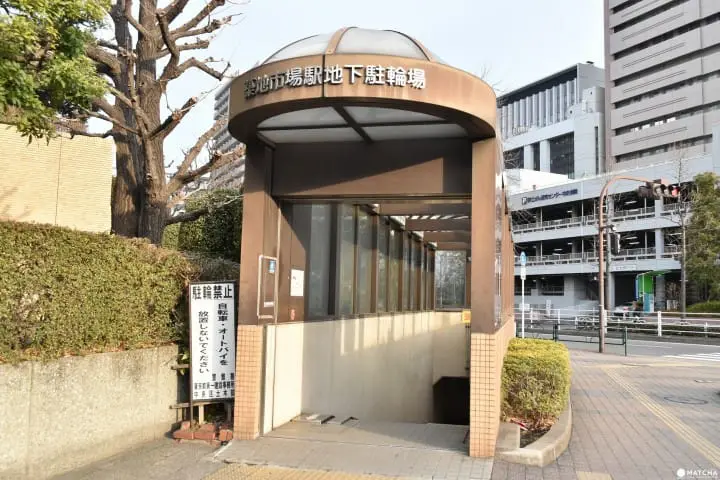
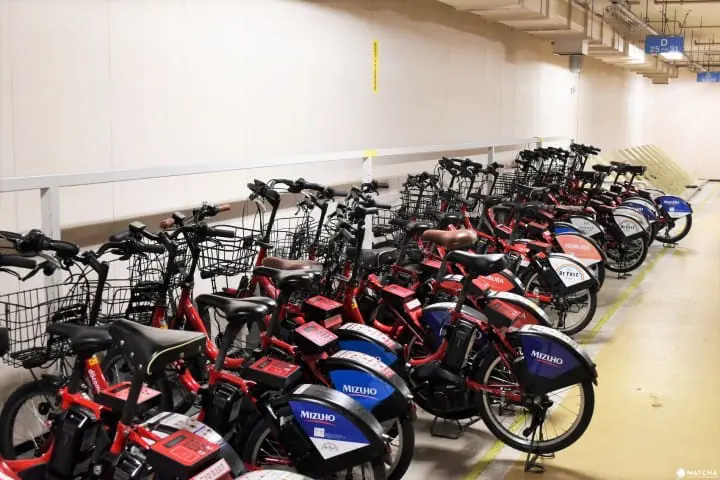
You will then arrive at the Tsukiji port (B3-04. Tsukiji Market Station Underground Bicycle Parking Area) after ten minutes from Ginza.
After we left Nagatacho, we were able to visit three sightseeing spots in approximately 30 minutes. The fee up until this point is 162 yen plus tax!
Want to Return Your Bicycle and Keep Sightseeing?
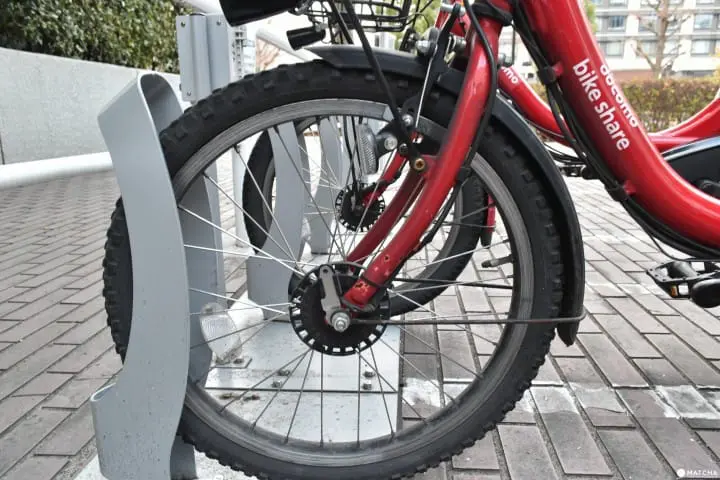
To better sightsee in Tsukiji, we returned our bicycles. When returning your bicycle, insert the front wheel into the rack and manually lock it with the key that comes with it. Lastly, the return will be finished once you’ve pressed the ENTER button.
To rent your next bicycle, you will need to make a reservation once more.
Feast on Fresh Seafood Bowls & Rice Balls at Tsukiji

There are two areas in Tsukiji: the Tsukiji Inner Market and the Tsukiji Outer Market. The Tsukiji Inner Market is where auctions take place and where restaurant and supermarket professionals come to make their purchases. The Tsukiji Outer Market is where general customers are able to enjoy shopping and food.
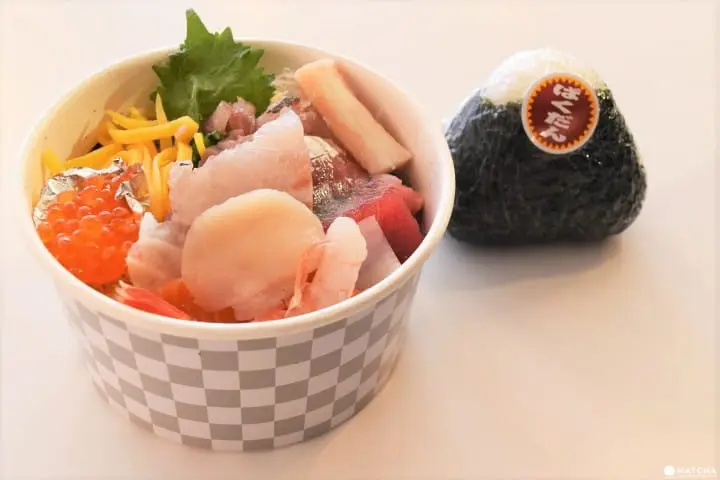
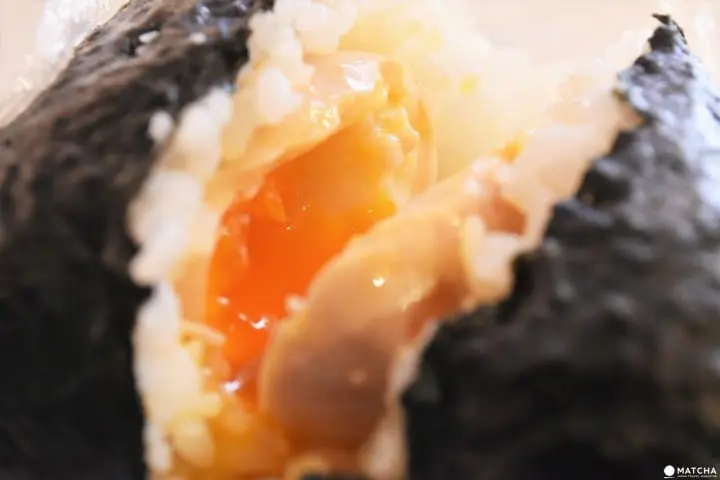
Let’s stroll through the Tsukiji Inner Market and eat at the onigiri (rice ball) restaurant Marutoyo. We ordered the Kaisen-don (Seafood Bowl) served with sashimi, including freshly caught tuna and salmon, and the specialty Bomb Onigiri filled with an entire soft-boiled egg.
The sashimi in the Kaisen-don was outstandingly fresh! Your chopsticks won’t stop when you eat the fatty, delicious meat together with the rice. When you take a bite of the Bomb Onigiri, the egg yolk will immediately ooze out as a salty and sweet flavor spreads completely throughout your mouth.
The Bomb Onigiri sells out quickly, so be sure to purchase it in the morning if you want to eat it.
10:15 From Tsukiji to Odaiba: Bicycle Share Even in Emergencies!
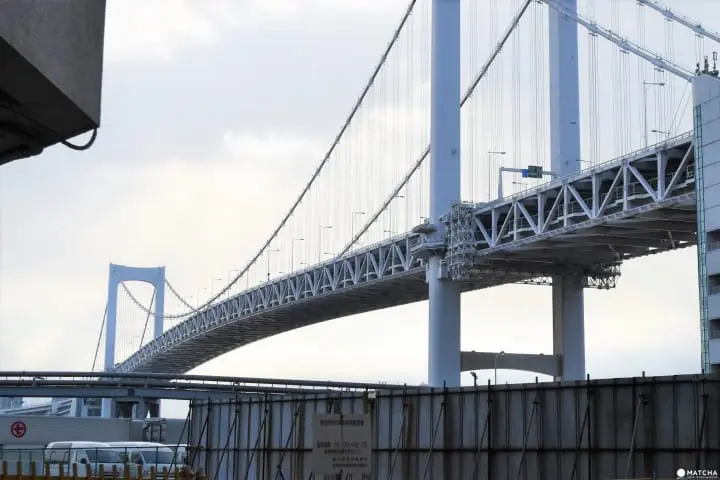
Rent a bicycle once more from the port you previously returned your bicycle to and head over to Rainbow Bridge to travel from Tsukiji to Odaiba. The Rainbow Bridge promenade is free to travel through, but you are not allowed to travel by riding your bicycle, so you must cross the bridge while walking your bike.
Unfortunately, on this day, the road had been blocked off due to a traffic accident and we were unable to cross the promenade. We returned our bicycle and traveled to Odaiba by monorail. The travel fee is 162 yen plus tax.
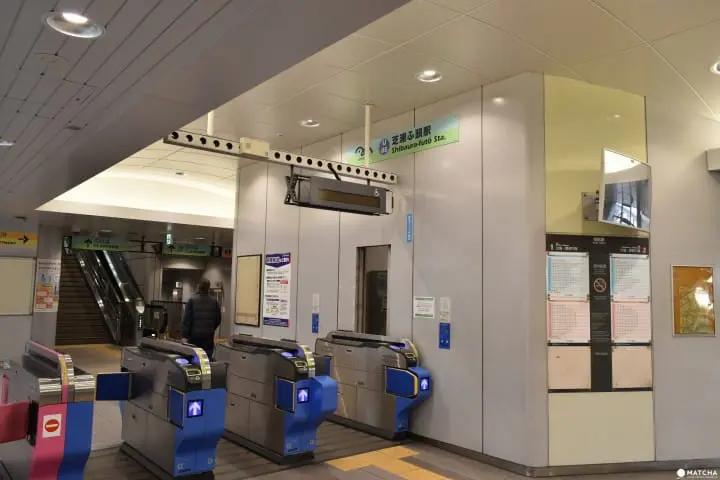
Return the bicycle to the port near Rainbow Bridge (C5-15. 7-Eleven Minato Shibaurafuto Store) and take the train at Shibaurafuto Station (Tokyo Monorail).
As ports are scattered throughout various areas, we were able to flexibly rearrange our schedule even after a problem had occurred.
11:15 Odaiba – The Place for Leisure Facilities and Photo Spots
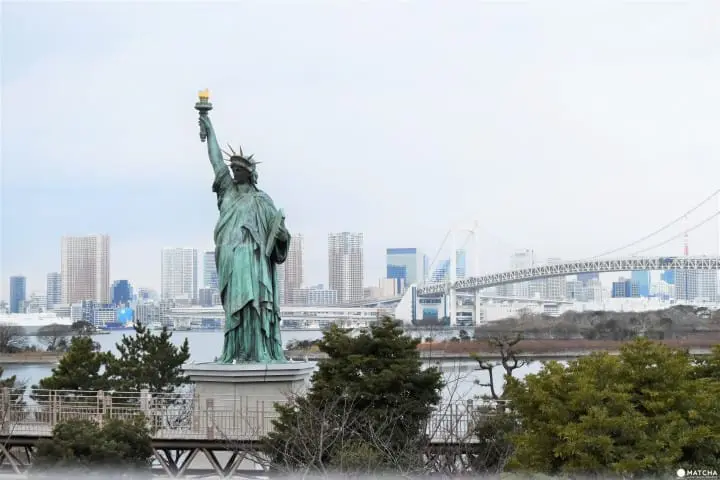
The Odaiba area is bustling with couples, tourists, and families that go to visit tourist attractions such as the Statue of Liberty, the Life-Sized Gundam, and the Ferris wheel.
During this visit, the bicycle sharing fee was 324 yen plus tax. If you were to take the same route by train, it would cost 950 yen plus tax. With a different of 626 yen, we were able to sightsee economically!
Sightsee Differently From the Norm With Bicycle Sharing!

The fact that you can experience the change of the cityscape as if you were traveling through time from the Imperial Palace to Ginza or witness the magnitude of the Rainbow Bridge up close is the real charm of bicycle sharing.
Furthermore, another perk is the fact that you can also return your bicycle even when sudden problems occur.
On the other hand, there is also possibility of there being no bicycles at the ports that you want to rent your bicycle at or that the bicycle will become harder to ride if the battery dies as the only cons of the service.
If that’s the case, then it’s best to check for ports that have many bicycles available beforehand and to also check the state of the meter at the port before reserving your bicycle.
How about not only enjoying your Tokyo sightseeing by train or taxi, but also by utilizing this bicycle sharing service?
Made in cooperation with: DOCOMO BIKE SHARE, INC.
1995年北海道生まれ。銭湯と旅行、映画が好きです。







































![[2025 Latest] A complete guide to enjoying a hidden gem in Japan: Tokyo and Kozushima in 4 nights and 5 days](https://resources.matcha-jp.com/resize/720x2000/2024/09/28-199498.webp)

![[30 minutes by train from Meitetsu Nagoya Station] A must-see for couples! Recommended date Feature Articles in Tokoname](https://resources.matcha-jp.com/resize/720x2000/2025/12/19-253428.webp)

![Deep dive into Japanese brands! A tour of famous leather shoe stores with GENSEI & Nin [Eizo Edition]](https://resources.matcha-jp.com/resize/720x2000/2025/12/18-253299.webp)